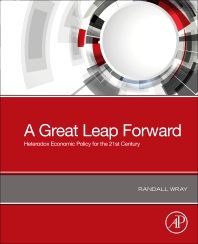
Publications
What Has Happened to Monetarism?
An Investigation into the Keynesian Roots of Milton Friedman's Monetary Thought and Its Apparent Monetarist Legacies
It is widely perceived that today's conventional monetary wisdom, and the common practice of monetary policy based thereupon, is essentially "monetarist" by nature, if not by name. One objective of this paper is to assess whether monetarism has had a lasting effect on the theory and practice of monetary policy; another is to scrutinize the key dividing lines between Milton Friedman's monetary thought and that of John Maynard Keynes. Among the paper's main theoretical findings are that the key issue is the theory of interest, which is at the root of differences in approach to money demand and liquidity preference. Similarities are more pronounced with respect to the supply of money and monetary policy control issues. However, while Keynes favored a stabilized wage unit combined with a flexible central bank to steer interest rates and aggregate demand, Friedman advocated a stabilized central bank combined with a free interest rate and employment determination in financial and labor markets, respectively. Additional differences arise at the practical and empirical levels: the dynamics of adjustment processes and expectation formation on the one hand, and the relative efficiency and riskiness of market-driven versus government-guided adjustments on the other. The puzzling fact is that, despite today's dominant market-enthusiast ideology, Friedman's idea of delegation—not to independent central bankers, but to the markets—enjoys remarkably little popularity.

